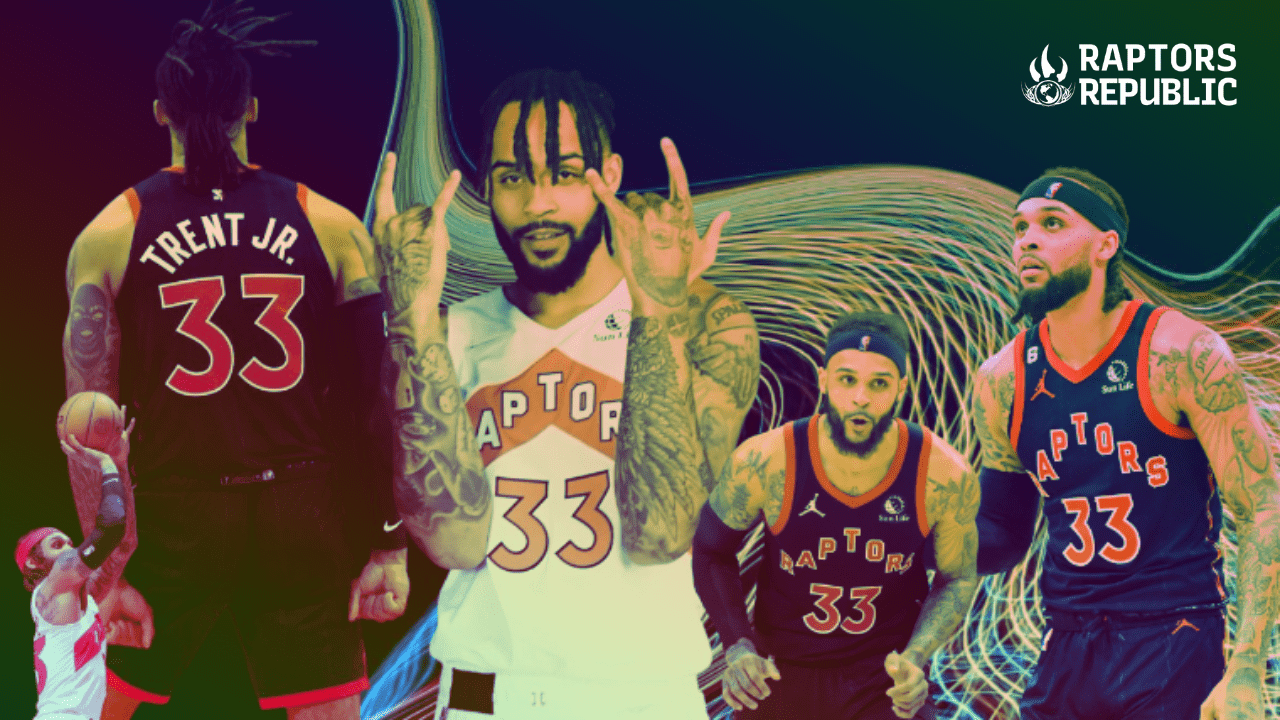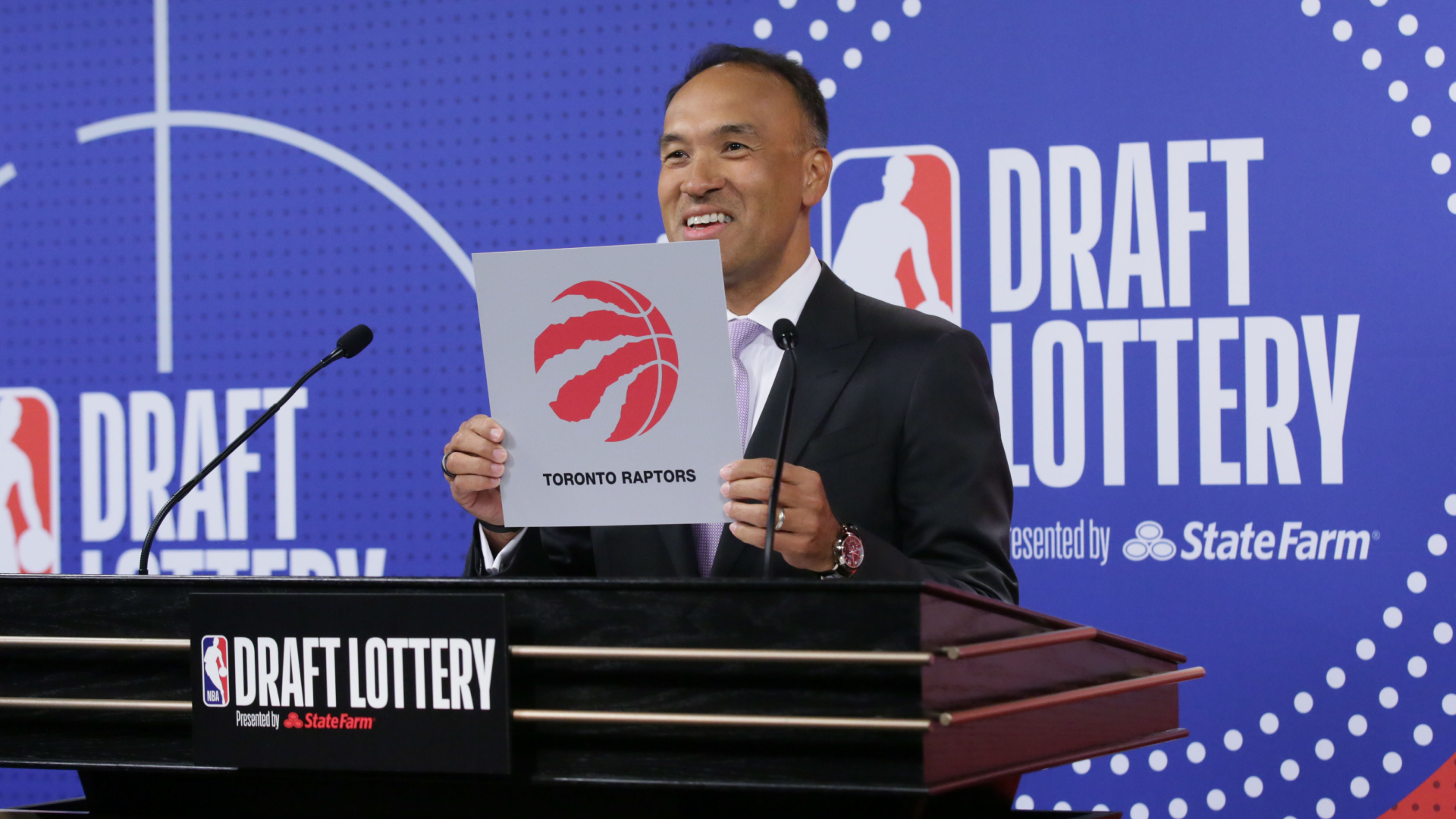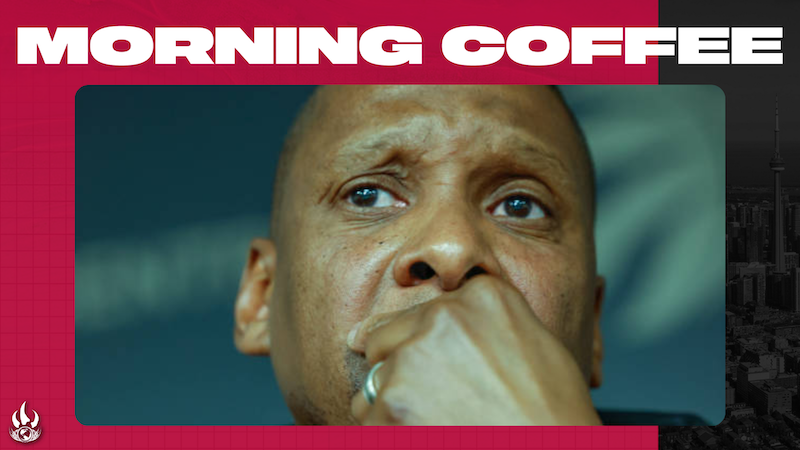The following is part of Raptors Republic’s series of pieces reviewing the season for the Toronto Raptors. You can find all the pieces in the series here.
Toronto’s offseason is, slowly, clarifying. On top of a new head coach in Darko Rajakovic, we also now know that at least one of the the Raptors’ free agents, in Gary Trent jr., will be returning to the team. We still don’t know the path the team will take. But like Rajakovic, Trent’s return will help Toronto walk either road.
At its most basic, this means Toronto will keep one of its core players. Chris Haynes, who first reported the news, also reported that Trent wants to be in Toronto for the long term, and he and Toronto are working on an extension. Trent is one of Toronto’s three plus shooters and two rotation guards. That’s meaningful! While Toronto was miserable in the first half of 2022-23, Trent was consistently solid. And even though he found a new role after the team added Jakob Poeltl, he still contributed heavily, although in a much more up-and-down manner.
Trent has holes in his game, which is why the Raptors moved him to the bench shortly after the Poeltl trade. He had a poor defensive season in 2022-23. He still isn’t a good passer or finisher. But he’s a very good shooter who can create space with a few dribbles, and he’s a crafty mid-range creator. Those are valuable skills. And even though his 3-point percentage dipped slightly, he had the most efficient 2-point outing of his career last season, with a burgeoning floater game and a touch of improvement around the rim when he could get his steps cleanly. He’s not one of the elite shooting guards in the league, but he’s a valuable contributor who makes the team better.
Furthermore, his handoff partnership with Scottie Barnes was brilliant. Barnes targeted him when he had the ball. The play used both of their strengths — and ameliorate their weaknesses — while leveraging the off-ball strengths of VanVleet, Anunoby, and Siakam. It was one of Toronto’s most efficient high-volume plays, and in fact one of the best handoff partnerships in the league. According to Second Spectrum, among 36 receiver-setter partnerships with at least 100 handoffs between them last season, Trent and Barnes finished sixth in points per chance at 1.13.
Of the five partnerships above them, four included past All Stars, including Luka Doncic, James Harden and Joel Embiid, Nikola Jokic, and Darius Garland; Trent and Barnes were dynamic. Or, you could compare that mark to the 36-highest-volume pick-and-roll partnerships, with a minimum of 500 last season, Trent and Barnes’ 1.13 points per chance would have ranked fourth, just ahead of Steph Curry and Kevon Looney. No matter which way you skin the cat, Trent and Barnes had league-leading chemistry. In many ways, Trent is the only teammate with whom Barnes has had that level of partnership. It’s vital that Toronto keeps that.
Beyond the play on the court, Trent’s return to Toronto is a team-building success.
The Raptors have lost a lot of talent over the last few offseasons — starting with Kawhi Leonard, and continuing on with Marc Gasol and Serge Ibaka. At the same time, the team hasn’t been able to turn its late first-round picks, second-rounders, and undrafted players into rotation contributors, which is how it managed to build its rotation in the first place. (All of Fred VanVleet, Pascal Siakam, and O.G. Anunoby were drafted — or not, in the case of VanVleet — in positions that don’t usually yield contributors.) That is a poor trend for success in team-building. Returning Trent is a success in terms of retaining talent.
It also gives Toronto plenty of flexibility in terms of building its roster next season.
Trent is now functionally on a one-year contract worth $18.56 million. He is immediately available to be traded, and if the Raptors do want to trade for a larger contract, having a mid-range salary like that — and he and Anunoby are the only two on the roster making that amount — is crucial to match salaries. It would be a cold bit of business to immediately trade Trent after he opts into his player option, but it’s possible Trent only opted in because the market cooled on him and he couldn’t find a better deal out there. It wouldn’t be as hurtful as, say, trading a mainstay like DeMar DeRozan.
Furthermore, because Trent opted in to a lower deal than the league expected he would sign if he opted out, the Raptors now have more money than they might have expected to sign their other free agents this offseason. If they waive Thad Young (which would keep only $1 million in dead money on the books) and renounce the rights to Will Barton, as well as sign their 13th pick, they’ll have approximately $46 million to re-sign VanVleet and Poeltl while remaining under the tax. That might not be quite enough to keep the band together — if the Raptors even want to. But Toronto could still manage some sign-and-trade magic, or just choose to go into the season over the luxury tax and get back under during the season before it’s actually calculated at the end of the campaign. (Or just pay the tax, but I doubt that happens.)
Trent gives Toronto’s front office more options, whether to tear down and add assets or to build up and add players. That he’s returning for less money than would have been expected a few months ago gives the team even more room to work. That’s all great news for Toronto, and it doesn’t hurt that Trent will be in a prove-it year after seeing how little market there was for his services.
Ultimately, Toronto is walking a narrow path to success heading into next season. But Trent’s opting into his player option widens that road.



